Premium Only Content

Night Flying Parkzone F4U Corsair Parkflyer - Round Two with the Blood Suckers!
This is the second installment of this beauty of an RC plane flying at night on my channel. The Parkzone F4U Corsair night flyer is one cool looking and nice flying plane. This time we were prepared with tools to keep the blood suckers at bay!
The Chance Vought F4U Corsair was a carrier-capable fighter aircraft that saw service primarily in World War II and the Korean War. Demand for the aircraft soon overwhelmed Vought's manufacturing capability, resulting in production by Goodyear and Brewster: Goodyear-built Corsairs were designated FG and Brewster-built aircraft F3A. From the first prototype delivery to the U.S. Navy in 1940, to final delivery in 1953 to the French, 12,571 F4U Corsairs were manufactured by Vought,[1] in 16 separate models, in the longest production run of any piston-engined fighter in U.S. history (1942--53).[2][3][4]
The Corsair served in the U.S. Navy, U.S. Marines, Fleet Air Arm and the Royal New Zealand Air Force, as well as the French Navy Aéronavale and other, smaller, air forces until the 1960s. It quickly became the most capable carrier-based fighter-bomber of World War II. Some Japanese pilots regarded it as the most formidable American fighter of World War II,[5] and the U.S. Navy counted an 11:1 kill ratio with the F4U Corsair.[6] As well as being an outstanding fighter, the Corsair proved to be an excellent fighter-bomber, serving almost exclusively in the latter role throughout the Korean War and during the French colonial wars in Indochina and Algeria.[7]
The performance of the Corsair was impressive. The F4U-1 was considerably faster than the Grumman F6F Hellcat and only 13 mph (21 km/h) slower than the Republic P-47 Thunderbolt;[27][28][29] all three were powered by the R-2800. But while the P-47 achieved its highest speed at 30,020 feet (9,150 m) with the help of an intercooled turbosupercharger,[30] the F4U-1 reached its maximum speed at 19,900 ft (6,100 m),[31] and used a mechanically supercharged engine.[32]
The U.S. Navy received its first production F4U-1 on 31 July 1942, but getting it into service proved difficult. The framed "birdcage" style canopy provided inadequate visibility for deck taxiing. Even more seriously, the machine had a nasty tendency to "bounce" on touchdown, which could cause it to miss the arresting hook and slam into the crash barrier, or even go out of control. The long "hose nose" visibility problem and the enormous torque of the Double Wasp engine also created operational problems.
Despite the decision to issue the F4U to Marine Corps units, two Navy units, VF-12 (October 1942) and later VF-17 (April 1943) were equipped with the F4U. By April 1943, VF-12 had successfully completed deck landing qualification.[36] However, VF-12 soon abandoned its aircraft to the Marines. VF-17 kept its Corsairs, but was removed from its carrier, USS Bunker Hill, due to perceived difficulties in supplying parts at sea.[37] In November 1943, while operating as a shore-based unit in the Solomon Islands, VF-17 reinstalled the tail hooks so its F4Us could land and refuel while providing top cover over the task force participating in the carrier raid on Rabaul. The squadron's pilots landed, refueled, and took off from their former home, Bunker Hill and the USS Essex on 11 November 1943.[38]
From February 1943 onward, the F4U operated from Guadalcanal and ultimately other bases in the Solomon Islands. A dozen USMC F4U-1s of VMF-124, commanded by Major William E. Gise, arrived at Henderson Field (code name "Cactus") on 12 February. The first recorded combat engagement was on 14 February 1943, when Corsairs of VMF-124 under Major Gise assisted P-40s and P-38s in escorting a formation of Consolidated B-24 Liberators on a raid against a Japanese aerodrome at Kahili. Japanese fighters contested the raid and the Americans got the worst of it, with four P-38s, two P-40s, two Corsairs and two Liberators lost. No more than four Japanese Zeros were destroyed. A Corsair was responsible for one of the kills, although this was due to a midair collision. The fiasco was referred to as the "Saint Valentine's Day Massacre".[41][42] Although the Corsair's combat debut was not impressive, the Marines quickly learned how to make better use of the aircraft and started demonstrating its superiority over Japanese fighters. By May, the Corsair units were getting the upper hand, and VMF-124 had produced the first Corsair ace, Second Lieutenant Kenneth A. Walsh, who would rack up a total of 21 kills during the war.[43]
This one is a cool airplane in a line-up of other cool World War II planes like the P-40, P-47, F4F, Spitfire, BF-109, FW-109, and P-51 Mustang Parkzone Warbirds. Hopefully they will add in a P-38 in the near future.
-
 3:28
3:28
GBLynden's RC
1 year ago4S Maiden | Arrows RC BAe Hawk 50mm EDF Jet
239 -
 1:58:31
1:58:31
Adam Carolla
14 hours ago $17.34 earnedJay Leno Does What Modern Politics Won’t: Taking Care of Family Without a Press Conference
51.8K14 -
 5:28:29
5:28:29
Akademiks
6 hours agoDay 2/30. Smurk on Stream?? 50 cent keep going at Big Meech. Kendrick to Buy Kanye West Catalog?
74.6K2 -
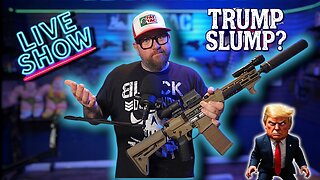 1:35:28
1:35:28
BlackDiamondGunsandGear
10 hours agoThe TRUMP SLUMP?
33.2K6 -
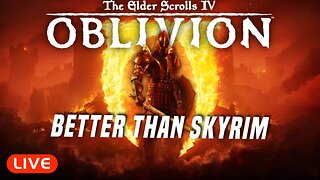 3:13:59
3:13:59
SilverFox
5 hours ago🔴LIVE - OBLIVION IS BETTER THAN SKYRIM NOW
31.5K1 -
 LIVE
LIVE
SpartakusLIVE
9 hours agoDuos w/ StevieT || Trios or Quads Later?!
141 watching -
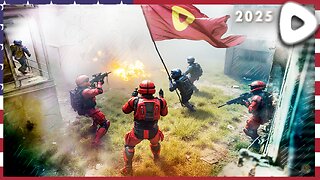 7:19:12
7:19:12
OhHiMark1776
9 hours ago🟢04-27-25 ||||| Halo Multiplayer Rumble: No. 13 ||||| Halo MCC (2019)
82.7K -
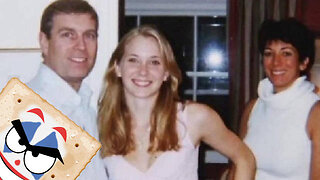 2:12:28
2:12:28
TheSaltyCracker
7 hours agoThey Killed Her ReeEEEe Stream 04-27-25
152K300 -
 2:33:51
2:33:51
vivafrei
17 hours agoEp. 261: Criminal Judges ARRESTED! Election in Canada! Santos Sentenced! RFK Jr. & Autism & MORE!
192K129 -
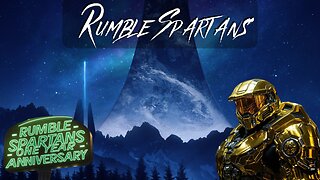 6:24:31
6:24:31
Amish Zaku
10 hours agoRumble Spartans "The One Year" Event
48.7K1